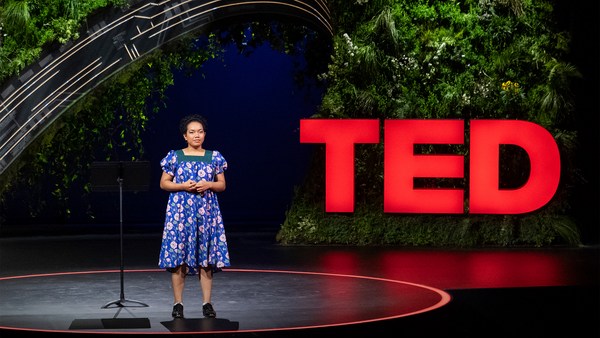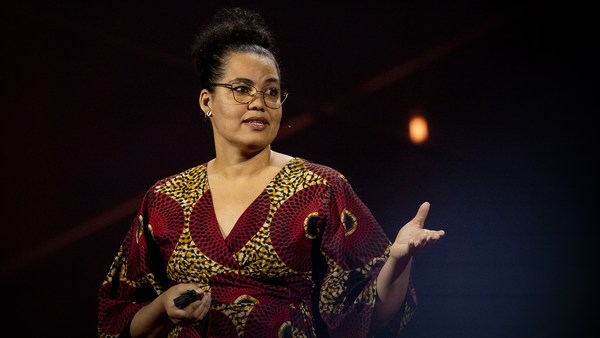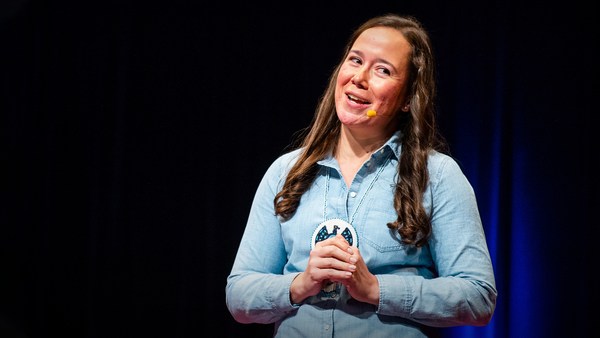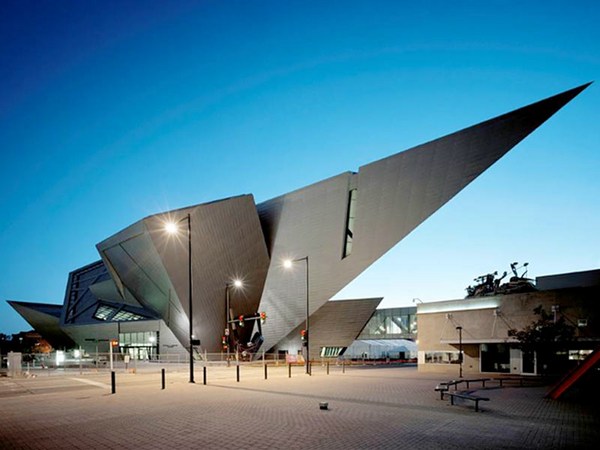As a child growing up in Barbados, there were two things I can count on every summer: school break and the hurricane season. At some point, we would go through this whole routine of duct-taping and all the glass doors in these big X patterns, tightly boarding up all the windows, except for one or two -- so that, as my mother would curiously put it, we could let the wind come through. And putting buckets in the living room to catch the rain in a futile attempt to stop our house from flooding when the roof started to billow and sag in the wind.
I hated it. Because I was terrified the entire time, whether it was a tropical wave, a thunderstorm, a tropical storm or the tail-end of an actual hurricane that barely missed us. It was all the same to me. A possible end. No light, no water, no electricity, just a simple battery-operated radio waiting for the "all clear." And in my young eyes, Mother Nature on a personal mission to destroy us all.
I never understood why. Why, if we knew this was going to happen every year, why couldn't we just do something to make sure that we were safer? Why did I always have to put out buckets and hide?
Fast forward to where we are now, living through a burgeoning climate crisis where my childhood fears have quickly become my adult reality. Just last year, my country started to experience freak storms like none we had ever seen before. This is a video of one such event. Now, this is a real-time capture, it is not sped up, there are no special effects. This system seemingly materialized out of nowhere. Typically, we'd have advance warning, but this time, there was none. We did not know this was coming until it was right on top of us.
Imagine being jolted out of your sleep to be greeted by this: 500 strikes of lightning per minute, thunder and rain so loud, it felt like it was coming from the guts of the Earth. The sky looked like a firework display with no pauses. And while we were still reeling from the impacts of this event, just a few weeks later, another one hit us. This time a Category 1 hurricane. It destroyed over 2,000 homes.
Unpredictable events like this are quickly becoming the norm. And in a small country like mine, of less than 300,000 people and a mere land area of just 166 square miles, small numbers, small events still mean big loss. So for us, who are already living through some of the repercussions of climate change, it is simply no longer enough for architecture to be beautifully passive. In the face of these looming new realities, we need to create architecture that genuinely performs.
So that's what I do. I’m an architectural designer, and I create structures that have a deep reverence and awareness of nature, yet protect us from it. I draw on those deceptively simple micro lessons that we as communities have been inspired by over the years that dealt with how we traditionally handle the environment and how we, rather than fighting to keep nature out, learned how to harness it and embrace it for a shelter.
Now, I'm sure there are countless examples of traditional building methodologies that have stood the test of time and weather. Stories of inherent resilience. But I want to share with you a story from my own country, one that has shaped my perspective as I lived through and designed for our changing climate reality.
After the abolition of the enslavement of African and Indigenous peoples in Barbados, my ancestors, newly freed, couldn't just go and find land to build their homes. Their lands, unlike them, were still property or "chattel" of the former enslavers. So out of this conundrum the Bajan chattel house was born. Chattel houses were modest homes built entirely of timber, with no nails mind you, and sat on tightly packed coral stone. The dilemma was that they had to be robust enough to survive the harsh temperaments of our tropical weather, yet somehow temporary, so that inevitably, when there was some kind of "dispute" between a former enslaver and a newly freed man or woman, he or she could quickly grab a couple of friends and family, pack up and move at a moment's notice for safety.
So how? How, despite being so low-tech and temporary, could these endemic designs survive often to see another day? Unlike many of the more established, robust and permanent homes. Well, since these were made from whatever timber was readily available, there were no fancy proprietary systems used. So rather than trying to create some kind of impenetrable force field against the wind, we had to get creative and figure out how to work with the wind instead of against it. And when the wind is blowing at incredible force against a home that simply does not have the adequate means to brace itself, options are limited. Gets kind of simple. Like my mother used to tell me, you let the wind come through.
Now, the trick to doing this lies unexpectedly in the arrangement of the timber facade, with windows such as these called "jalousie" windows. And a quick side note, jalousie actually comes from the French word “jalousie” meaning "jealousy." So originally, these angled horizontal slats called louvers were meant to keep jealous, peering eyes from seeing into your home. But architecturally, what they did was allow wind to filter through while still keeping rain out. So these intentionally aligned apertures would allow you to open all the slats on the windows and doors to literally let the hurricane pass through, channeling that wind through the building's interior, instead of building up destructive pressure on the facade. The result was that the weather, as I might say, if I was at home, “might ’lick down ya house, but it aint gine mash it up.” Translation for those who need it: the compound effect of these micro solutions was a house that might ... it might bend, but it wouldn't totally break.
Drawing on examples such as this, I quickly realized that as a region, we really need to depart from this more global convention of designing our buildings to close themselves off from nature so that architecture, for us, becomes less about the external expression, aesthetic and shape of the building, but more about its holistic performance in concert with the environment. Like those jalousie windows, it's about those micro solutions, those little details that quite literally make or break a building.
For example, after the passage of Hurricane Maria through the Caribbean in 2017, many properties suffered devastating loss. As designers, we were faced with that now common question: How do we build back better? The answer? Simple. You take what works, discard what doesn't, and apply it to modern designs. In one instance, the wind-dispersing capabilities of those traditional louvers became a modern interpretation. So my team and I at the time designed a timber fin facade that would do the same thing: break up the wind against the building's exterior while still allowing light to penetrate to the building's interior, all while protecting the exposed glass from wind and wind driven missiles. So no more duct tape. In another instance, we designed a sacrificial central core that allowed wind to penetrate through the interior of the building while preserving adjacent, locked-down watertight bunkers zones for people to retreat from the wind and the rain. So no more buckets. And many of my colleagues in island nations, such as my own, are in the process of integrating this similar strategy of taking traditional designs and applying them to modern approaches. And this is not just limited to hurricanes, but address issues such as floods, earthquakes, landslides, where traditional, stilted designs help to keep us elevated above torrential downpour and inundation and where cross-brace lattice elements make sure our buildings are flexible enough to withstand the Earth moving and shaking beneath them.
We are at a point now where we model an intelligent digital twin of each design in virtual reality. Think of it as a sort of computerized 3D carbon copy of each micro solution, so that we can stress-test it. We can throw real-world climate scenarios its way. And because we’re in that virtual environment, there's no loss of human life, there's no costly damage to infrastructure, and we can pick a building apart and figure out what it actually takes to make a more resilient structure. We can, say, throw a Category 5 hurricane wind simulation its way, and if it fails in that safe environment, we can fix it. We can tweak it, we can improve it, we can optimize the design, and we can do that iteratively until we get it right.
And because we have started from these Indigenous references, we end up with well-performing, modern, yes, but accessible architecture that is not alien to its cultural or climatic context. Architecture that is not alien --
(Applause)
Architecture that is not alien to the people who must build and live in it. Architecture that by testing and design is more resilient as we prepare for harsher weather.
Now, I've said a lot. But nothing ... Nothing prepares you for the mental uncertainty of experiencing, and hopefully living through, a hurricane. That feeling of total vulnerability. Of being fully exposed to the elements and at the absolute mercy ... of nature. The sound of the wind ripping a building to pieces. The sound of your neighbors’ screams being carried away in that same wind. The “What if?” "What if they don't make it?" "What if we don't make it?" "What if I don't make it?" "What if?"
But what if we could design away some of that uncertainty and shelter in place with a sense of confidence that we have given ourselves the best chance at surviving, the best chance at weathering each storm? Across the world, as humans, we are doing amazing things. We are putting people into space for leisure.
(Applause)
We are searching and figuring out how to live in and survive the extremes of distant planetary climates. Yes, that's amazing. However, on this planet, so many of us still live in constant fear that the next event will be the big one that either dramatically changes or outright claims our existence here on planet Earth forever.
You've probably heard this a million times, but we as small island nations are living in our present, the future that you all are poised to face. So we need to know now what works and what does not in our specific contexts, because it is a true, immediate, cyclical matter of life and death for us.
So. As we step into this new era, as we design and build our future cities and communities, the approach, again, is so simple. We must do so no longer leaving the most vulnerable of us to guess and hope for the best. But based on tried, tested, traditional knowledge and lived experience, designing for the absolute worst. Thank you.
(Applause and cheers)





